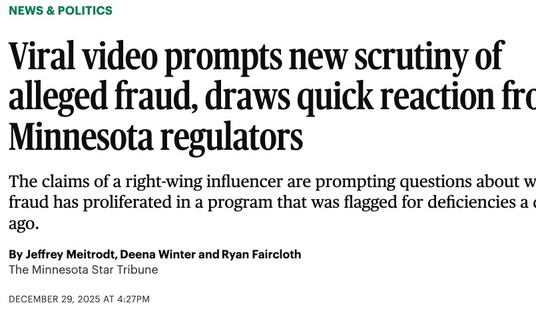That’s a nine-point shift towards the Republican in a month, according to Emerson Polling. Gotta be a Kavanaugh effect, right?
Except … the Kavanaugh effect is supposed to be a red-state phenomenon. Heidi Heitkamp and Phil Bredesen are suddenly getting blown out, the theory goes, because although both parties might be furious about the Kavanaugh clusterfark there are waaaaay more Republican voters in their home states than there are Democratic ones. That’s the 2018 curse for Democrats in the Senate: With very few exceptions, they’re fighting on Republican terrain.
But Nevada is one of those exceptions. In fact, it’s the only pick-up opportunity the Dems have in a state won by Hillary Clinton in 2016. If Heller holds on in Nevada, whatever small chance Team Blue has of retaking the Senate is up in smoke.

This was a hybrid poll by Emerson, incorporating automated landline calls and an online survey to arrive at the result. I’m always leery of the fact that they don’t call cell phones, but FiveThirtyEight gives them a very respectable B+ rating on their pollster scorecard. It should also be noted that no other pollster has Heller anywhere near a seven-point margin although this is the third straight survey in which he’s led Democrat Jacky Rosen. (The last two polls each had him ahead by two points.) You can dismiss it as an outlier if you like, or you can look at the three polls collectively as evidence that the electorate is suddenly trending red and the trend is deepening. The last poll Rosen led (by four) was in the field in the days before, during, and after the Ford/Kavanaugh hearing. Ever since it’s been all Heller. Make of that what you will.
Not the only good news for Republicans today in polling either. They’re still a longshot to hold the House but this offers a bit of comfort to anyone anxious at the scary double-digit leads Democrats have lately on the generic ballot:
Democrats have a 53-42 percent edge in the generic ballot for the House. But inside the 66 districts that are tossups, or only leaning, that lead evaporates into a 46-47 D v. R race. https://t.co/B2VelNrN5Z
— Rick Klein (@rickklein) October 15, 2018
Winning the blue districts by 50 points won’t help much if they’re losing the purple ones narrowly, although I don’t they’re worried about that. Nate Silver’s site gives them better than an 80 percent chance of retaking the House as I write this, slightly better than the GOP’s chances of holding the Senate. Enthusiasm to vote among both parties is now sky high, with 81 percent of Dems and 79 percent of Republicans telling WaPo they’re “absolutely certain to vote” or that they already voted early this year. The Republican number is higher than it was in 2014, the year of the last red wave — but the Democratic number is far higher, 18 points higher than it was four years ago. What kind of precedent is there for a midterm in which *both* parties are suddenly highly energized? Not a lot, says Amy Walter:
This year, however, is different. While Democrats may not have been fired up about Clinton, they are unified in their motivation to oust Trump. On top of that, independent voters, especially independent women voters, are soured on Trump and congressional Republicans.
At the same time, this election isn’t like 2006, either. That year, featured an unpopular GOP President and a dispirited GOP base. This year, Trump’s job approval is in the same range as Bush’s — but Trump is more popular among the GOP base than Bush was, and, GOP voters are as motivated to vote today as they were back at the height of the Tea Party influence.
In other words, it’s not fair to compare this election to 2016. But, it’s also not fair to suggest it’s 2006 either. It is…different.
A split decision between the House and Senate next year somehow seems like the most fitting outcome. Divided America, all the way up to the legislative branch. By the way, after complaining about it a few days ago, let me note that we *still* have no recent polling in the battleground states of Indiana, Missouri, Montana, and Florida. The first two haven’t been polled in two weeks, the last two haven’t been polled since late September. We’re momentarily completely in the dark as to whether and to what extent the “Kavanaugh effect” is scrambling those states. The Senate complexion might have completely changed there since the Ford hearing and the Kavanaugh hearing. Can someone please do a farking poll?
Update: Yikes, should have checked the crosstabs before promoting this Emerson poll. Jon Ralston, who knows Nevada politics better than virtually anyone, spots a problem:
I see @allahpundit and others are excited about GOP leads in new Emerson IVR/online poll. Internals: Party reg/gender/Hispanic fine. But Heller winning A-As, Hispanics in landslides. I don't think so. Only poll that matters: My analysis of early voting #s. https://t.co/crzRK37CAA pic.twitter.com/izx7ngPV74
— Jon Ralston (@RalstonReports) October 15, 2018
The sample of African-American and Hispanic voters is very small and therefore has a high margin of error, but yeah, Heller’s really benefiting from that margin here. If he’s ahead in Nevada — and other polls have showed he is — it’s likely much tighter than seven points.








Join the conversation as a VIP Member